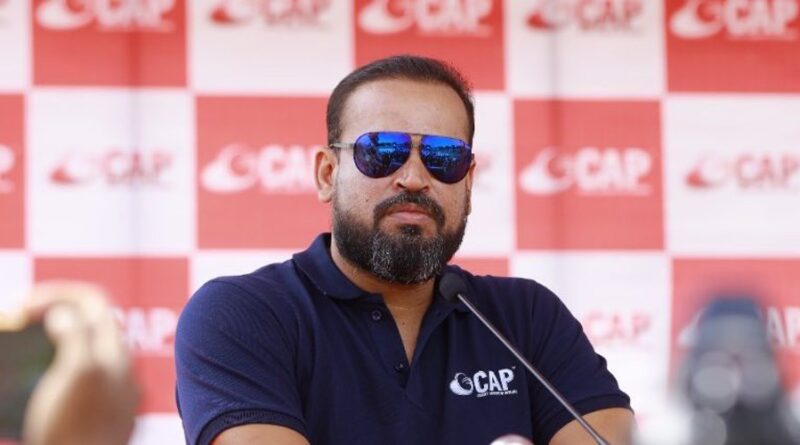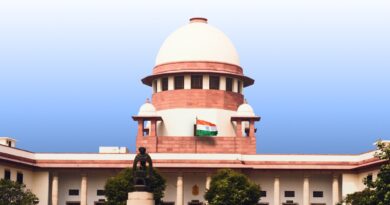Yusuf Pathan’s Adina Mosque Visit Ignites Fresh Debate Over Site’s Hindu Temple Origins
TMC MP’s social media post praising 14th-century architecture draws BJP fire, reviving claims of Islamic-era destruction in West Bengal’s Malda
Kolkata, October 18, 2025 – A routine visit by Trinamool Congress (TMC) MP and former Indian cricketer Yusuf Pathan to the historic Adina Mosque in Malda district has snowballed into a major political and historical controversy. Pathan’s appreciative post on X (formerly Twitter) about the site’s architectural grandeur has been met with sharp rebuttals from the Bharatiya Janata Party (BJP), which insists the mosque was constructed atop the ruins of an ancient Adinath Temple. The dispute highlights ongoing tensions over India’s layered religious history, with social media amplifying claims and counterclaims.
Pathan, representing the Behrampore constituency in the Lok Sabha, shared photos from his visit on October 16, 2025, describing the mosque as a testament to Bengal’s rich heritage. “The Adina Mosque in Malda, West Bengal, is a historic mosque built in the 14th century by Sultan Sikandar Shah of the Ilyas Shahi dynasty,” he wrote. “Constructed in 1373-1375 CE, it was the largest mosque in the Indian subcontinent during its time, showcasing the region’s architectural grandeur.” His post quickly garnered attention, but not all of it positive.
The BJP’s West Bengal unit responded swiftly, labeling the structure as the “Adinath Temple” and accusing Pathan of ignoring its alleged Hindu roots. “This is not just a mosque; it’s built on the site of the ancient Adinath Mandir,” the party stated in a reply on X, echoing long-standing assertions by Hindutva activists. BJP leaders have claimed for years that Sultan Sikandar Shah demolished a grand Hindu temple during his reign (1363-1374 CE) to build the mosque, using stones from the razed structure. This narrative gained traction on social media, with users sharing images of purported Hindu carvings and idols embedded in the mosque’s walls.
Social media reactions poured in, with several posts fact-checking Pathan’s description. One user, Arpan Das (@arpanDvengeance), wrote: “TMC’s Yusuf Pathan proudly posts pics of Adina Mosque in Malda. BJP calls it Adinath Temple. And history agrees — it was a temple before invaders turned it into a ‘mosque.’ The tragedy isn’t what happened centuries ago. It’s that today’s ‘seculars’ still celebrate the invaders.” Another, Sashanka Chakraborty (@SashankGuw), added: “Yet another shameless photo-op by @AITCofficial MP Yusuf Pathan at the Adina Mosque in Malda—built by Sultan Sikandar Shah in 1373 after razing the ancient Adinath Temple! Hindu carvings and idols still scream from its walls.” OpIndia, a right-leaning news portal, published an article titled “TMC MP Yusuf Pathan shares pictures of disputed Adina Mosque, gets fact checked on social media how it was the Mandir of Adinath,” further fueling the debate.
Historical Context: Mosque or Temple?
The Adina Mosque, located in the ancient city of Pandua (now in Malda), was commissioned in 1373 and completed in 1375 during the Bengal Sultanate era. At the time, it was the largest mosque in the Indian subcontinent, featuring a rectangular hypostyle design with an open courtyard, cloisters, and intricate terracotta ornamentation blending Islamic, Hindu, and Buddhist motifs. Sultan Sikandar Shah, the second ruler of the Ilyas Shahi dynasty, is buried inside, and the site served as a symbol of his victory over Delhi’s Tughlaq forces.
However, controversy surrounds its origins. Many historians and archaeologists note that the mosque incorporates stones from pre-existing structures, including carvings of elephants, dancing figures, and other motifs typical of Hindu and Buddhist architecture from the Pala-Sena period. Activists from the BJP and Vishva Hindu Parishad (VHP) claim these elements prove the mosque was built by demolishing an Adinath Temple dedicated to the Jain Tirthankara Adinath. “The mosque bears rather unmistakable connections with Hindu structures—stones carved with Hindu motifs are part of the mosque’s architecture,” states a report from Outlook India.
Counterarguments exist, with some scholars arguing there’s little direct evidence of a pre-existing temple at the exact site. European accounts from the 19th century, such as those by Major William Francklin and others, describe the Hindu motifs but do not explicitly link them to a demolished temple. The Archaeological Survey of India (ASI), which maintains the monument, describes it as “the most remarkable existing example of Muslim architecture from 1369 AD,” built by Sikandar Shah. An ASI signboard at the site acknowledges that “architectural members of some earlier structures have been utilised partly in the construction of the mosque,” but stops short of confirming a temple’s destruction.
Previous Incidents and Security Measures
The site has been a flashpoint before. In February 2024, Hindu priest Hiranmoy Goswami, president of the Vishwavidya Trust in Vrindavan, led a group to perform puja inside the mosque, claiming to have spotted a Shivling and idols of Hindu deities. Locals alerted the police, who intervened, leading to the ASI filing an FIR against Goswami for violating rules at the protected monument. The incident prompted the temporary closure of the mosque, installation of CCTV cameras, and establishment of a police checkpost.
Goswami argued, “The Adinath Mandir sleeps under this Adina Masjid… That history is unknown to many.” While the TMC accused the BJP of stoking communal tensions, the BJP countered by alleging duplicity in handling religious sites.
Political Ramifications and Broader Implications
This latest episode comes amid heightened scrutiny of historical religious sites in India, following disputes like those in Varanasi and Mathura. The TMC has dismissed the BJP’s claims as politically motivated attempts to polarize voters ahead of elections, while the BJP insists on reclaiming “encroached” Hindu heritage. As debates rage online, with posts like those from SK Chakraborty (@sanjoychakra) reiterating the temple-mosque narrative, the Adina site remains a symbol of Bengal’s complex Sultanate-era history.
Experts urge caution, emphasizing the need for archaeological evidence over political rhetoric. For now, the Adina Mosque stands as a protected ASI monument, open to visitors but closed to religious activities that could escalate tensions. Pathan has not yet responded to the backlash, but the controversy shows no signs of abating.




